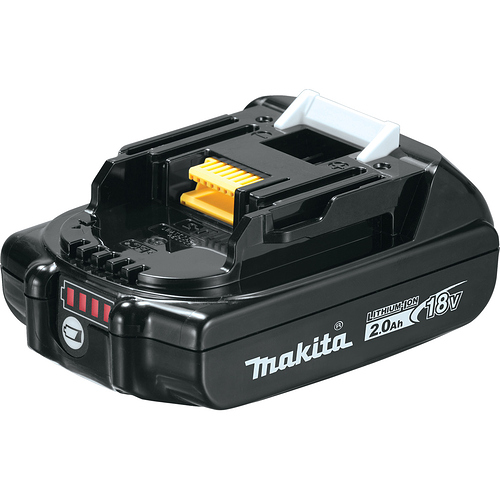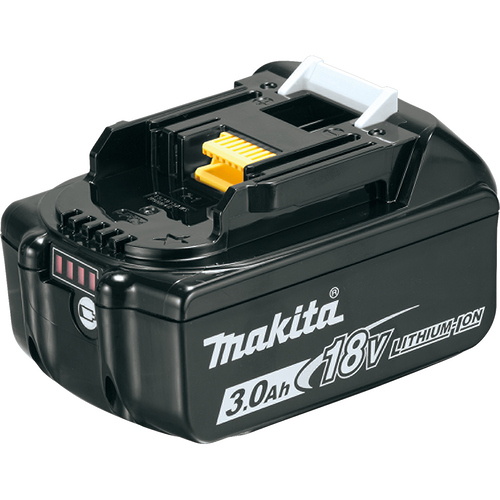Yes they are the same. Here’s an example of what’s known as a slim style pack, basically they’re lower capacity batteries that only use 1 “row” of battery cells.
https://cdn.makitatools.com/apps/cms/img/bl1/ee8c376b-1aa3-4b2b-972f-e66a426d8bdd_bl1820b_p_1500px.png
This one is an example of an “extended” style pack, it is higher capacity and uses two or more rows of battery cells, hence the bigger physical size and extended moniker.
https://cdn.makitatools.com/apps/cms/img/bl1/d56d6ace-201b-4979-9258-c9d6689c4d15_bl1830b_p_1500px.png
With the tools, color of the tool unfortunately doesn’t really differentiate them. Makita currently makes two categories of drills, 12V, and 18V. The 12V tools come in teal for the current generation, white for the older style 12V tools. The current 18V tools come in white, teal, and black, the difference being black tools are more compact, white tools are lighter duty, and teal tools are heavier duty. You can’t use a 12V battery on an 18V tool, and can’t use an 18V battery on a 12V tool. The Ah rating of the battery is its capacity, so a 4Ah battery has twice the capacity of a 2Ah and so forth. You can always use a higher capacity battery on a tool, provided the larger batteries physically fit. there’s no such thing as too much capacity, aside from weight and battery size considerations. In general, you can also use lower capacity batteries on a tool, but performance of the tool may suffer. So essentially, for a regular 18V drill at least, which isn’t a high power tool, any 18V battery of any capacity will work.
Some higher power tools like saws are intended to only be used with extended style batteries, because those batteries are capable of supplying the higher power demands of those tools, whereas the slim style batteries may not be able to provide that level of power. In semi-recent tools, this isn’t a problem, they’ll all work with any recent battery, you’ll just notice the reduction in power and runtime with the smaller batteries, or possibly the tool shutting down from the battery getting too hot.
Makita had a bout of interestingness with their early 18V tools in that they made tools which had extra plastic tabs so you couldn’t plug a compact / slim style battery into the tool. This was to prevent their early high draw tools (like the circular saw) from being used with their early slim style batteries. I don’t know if they ever did that on their drills, and I don’t think it’s something you’ll need to worry about with any new battery. That is what that toolguyd article I linked talked about, if your tool has one of those connector types pictured, it’ll be compatible with any of the newer batteries just fine.
So if we can confirm your drill is an 18V model that uses the slide style batteries, all you need is a starter set with a battery (of whatever size you prefer) and charger. The charger I posted earlier was just an example, mainly because it has both 12V and 18B charging slots, so you can see the size difference between those batteries. For batteries, slim batteries save on size and weight, but have a shorter runtime. While the extended ones will weigh more and be larger, they may provide a slight increase in the power of the tool by virtue of being a more capable battery. If you plan to get other tools in the future, I might recommend the larger battery pack just in case you get a tool that would benefit even more from it than an old drill.
Probably too much information, sorry about that. If your drill looks like it takes the slide style batteries, it’s most likely 18V, since the 12V slide style is more recent. A photo of the drill can confirm that if you want. I’ll take a look for starter kit options and post a few in a bit for you for 18V batteries.


